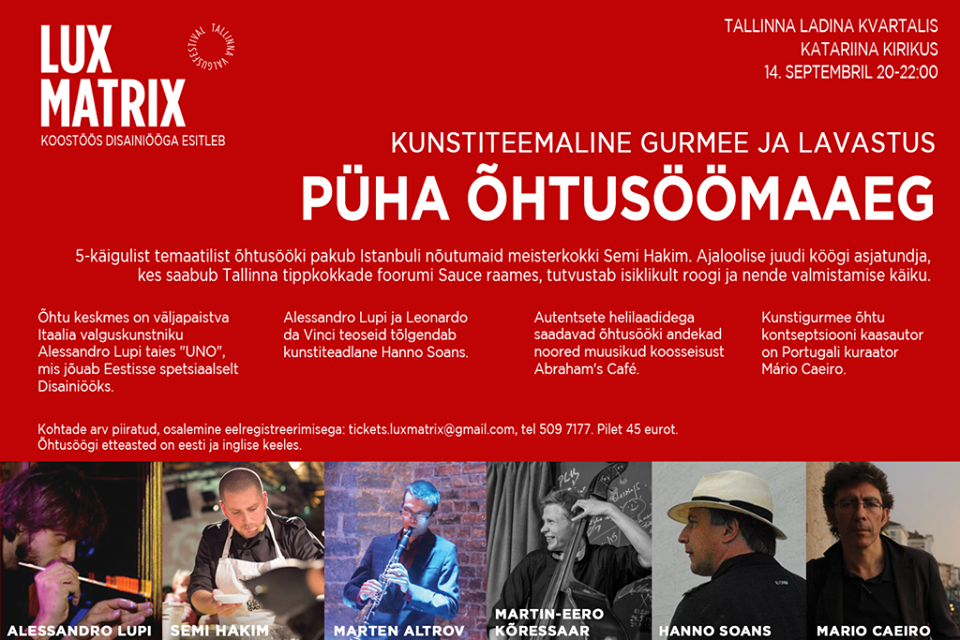Lux Matrix in 2016 consisted in two moments, again in the core of the Old Town of Tallinn. The installation of the astounding work UNO (2013) by Alessandro Lupi in the mesmerizing space and context of St. Catherine Church in the Latin Quarter, between 8 and 14 september was one of them. The 14th there was an Archeologic Gourmet event mixing Art, Food, Music and Performance, “The Last Supper”, during which international chefs offered their creative interpretation of the iconic Last Supper motif. Curators: Mário Caeiro and Indrek Leht from Valgus Festival.
UNO transforms itself depending on the visitor’s point of view. While standing the viewer perceives dispersed spots of light similar to constellations. Sitting on a school chair, kneeling on a prie-dieu, a carpet and a cushion – each of these positions reveals a different image to the viewer: an atom, a cross, a menorah the name of Allah and Buddha’s eyes. This work looks into the possibility and the awareness of a “whole” through the idea of dogma and faith.
Alessandro Lupi
https://www.flickr.com/photos/designnightfestival/sets/72157672548117550/with/29003556824/
Lux Matrix em 2016 consistiu em dois momentos, de novo no coração do Centro Histórico de Tallinn. A instalação da obra UNO (2013) de Alesssandro Lupi, entre 8 e 14 de setembro, na Igreja de Sta. Catarina, um contexto espacial e cultural de enorme riqueza e qualidades atmosféricas. No dia 14, decorreu “The Last Supper”, um evento de ‘arqueologia gourmet’, reunindo Arte, Comida, Música e Performance, com a participação de chefs internacionais oferecendo a sua interpretação do icónico tema. Curadores: Mário Caeiro e Indrek Leht (Valgus Festival).
UNO transforma-se em função do ponto de vista do visitante. Em pé, o/a espectador/a apercebe-se de pontos luminosos semelhantes a constelações. Sentando-se numa cadeira de escola, ajoelhando-se no genuflexório, num tapete ou nua almofada, em cada uma destas posições lhe é revelada uma diferente imagem: um átomo, uma cruz, a menorá, o nome de Alá ou os olhos de Buda. Esta peça aponta para a possibilidade e a consciência do ‘todo’ através da ideia do dogma e da fé.
Alessandro Lupi

